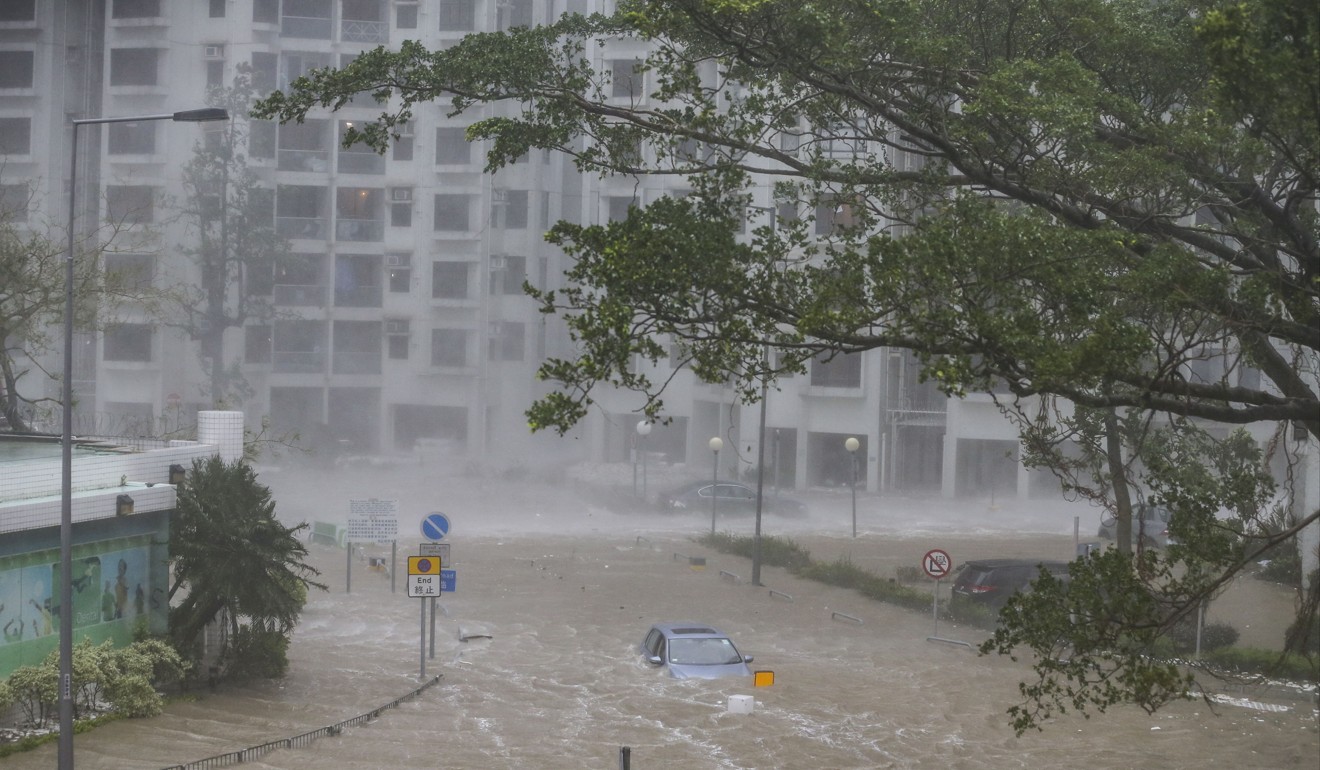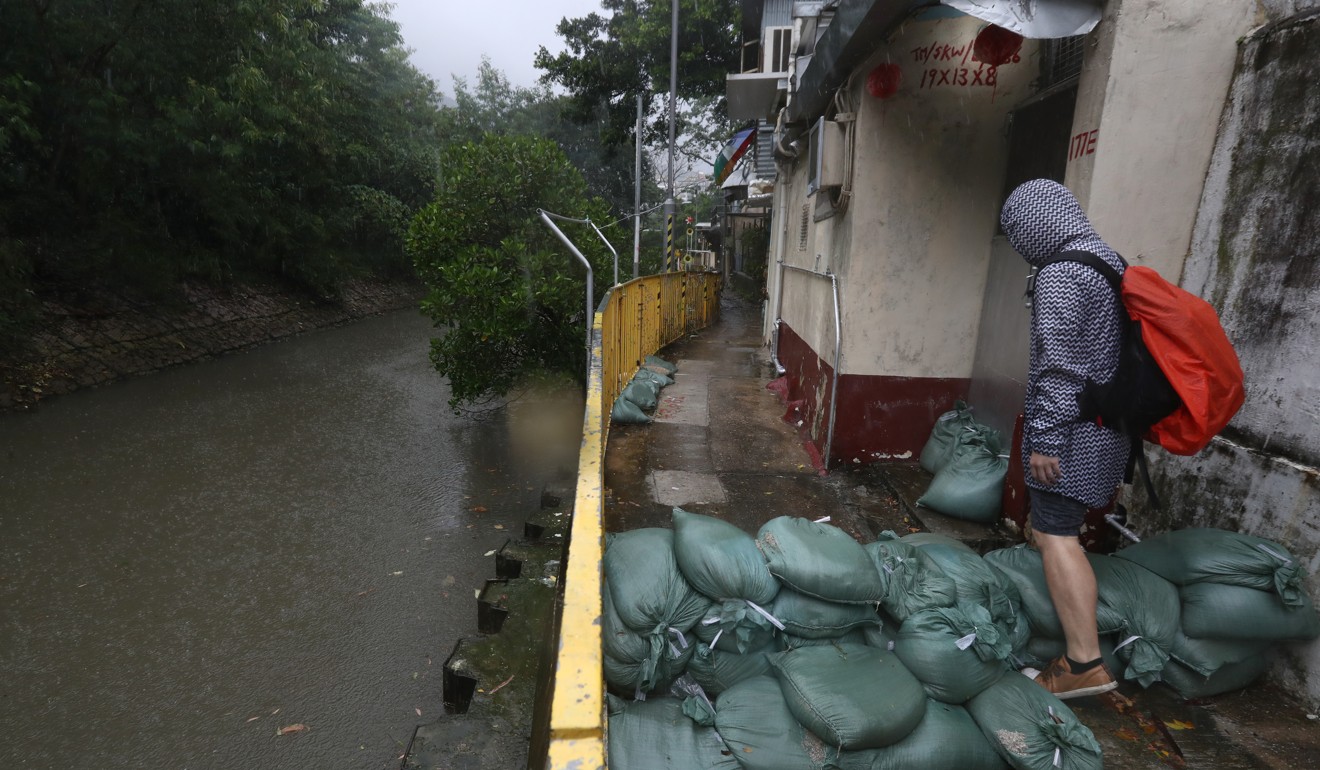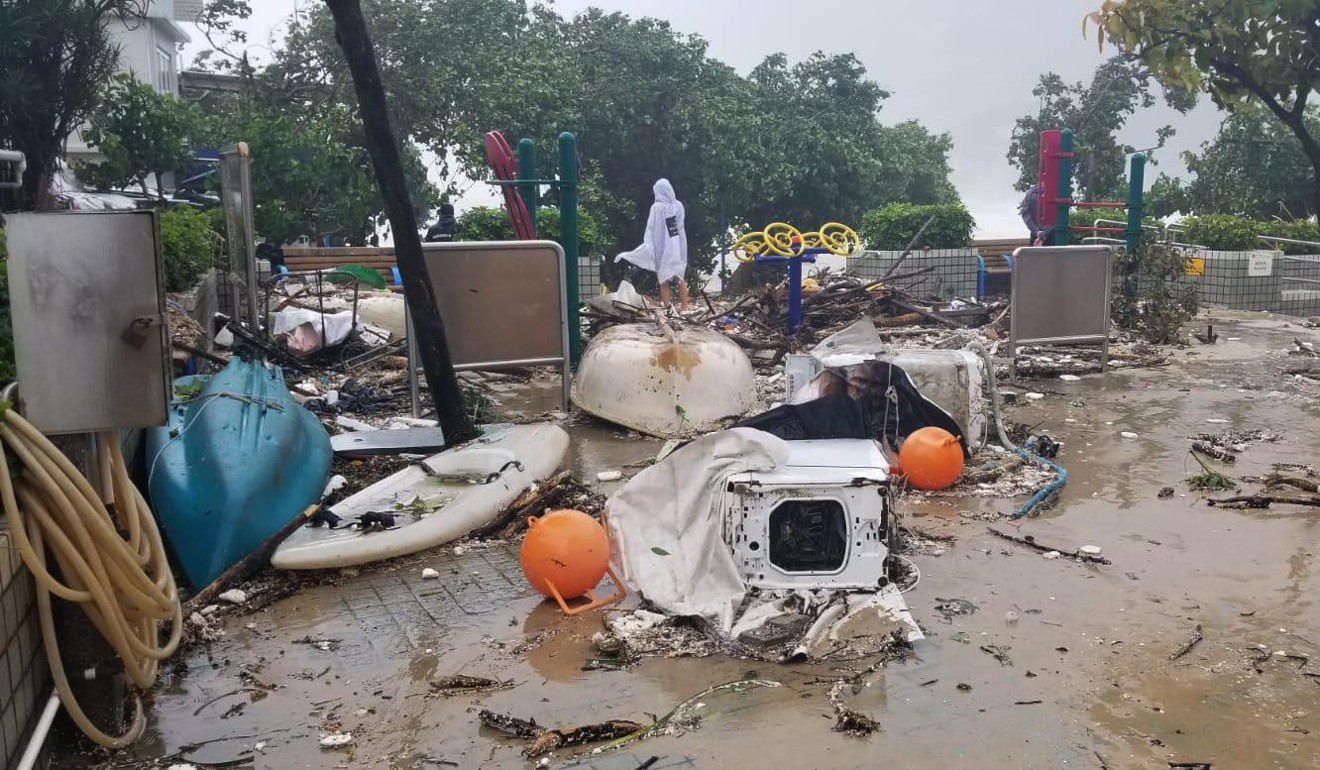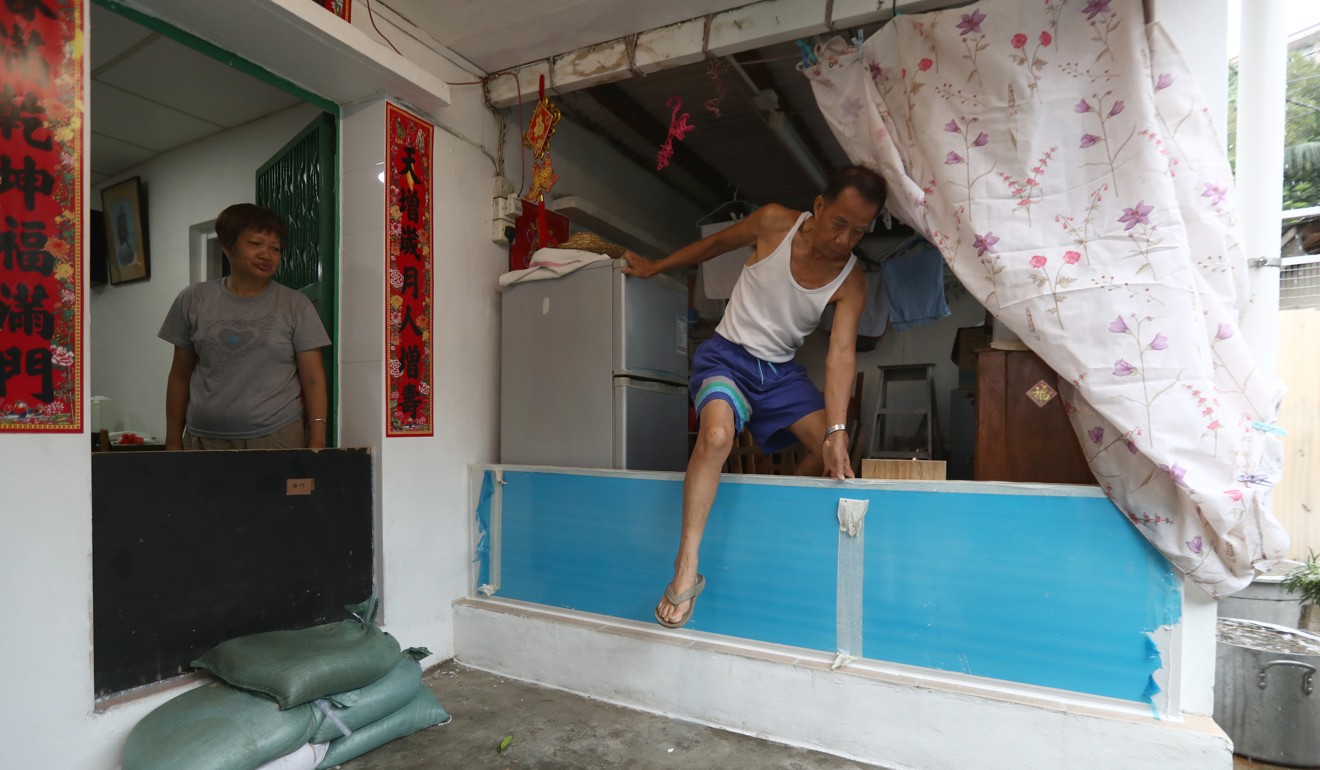
Typhoon Mangkhut: Serious flooding and swaying buildings as Hongkongers battle monster storm
Aberdeen resident’s flat shook for three hours while woman who lives in Heng Fa Chuen said her bedroom window was torn away by gusts
Walls collapsed, bamboo scaffolding was torn down and windows were blown out – Typhoon Mangkhut, one of the most powerful storms to ever hit Hong Kong, battered the city on Sunday.
The Observatory issued a typhoon signal No 10 – the highest warning on Hong Kong’s storm scale – at 9.40am on Sunday. A red rainstorm warning, the second highest on that scale, followed just over an hour later.
The rains brought serious flooding and waves at least three metres high to the coastal areas.
A widely circulated online video showed a residential building swaying in the gusts.
As it happened: Typhoon Mangkhut smashed Hong Kong for hours
Erica Cheung King-chi, 37, who lives with her husband and son, 1, on the 26th floor of a residential building facing the sea in Aberdeen, said her flat started to shake around noon and did not stop for three hours.
“When I stood still, I could feel the flat shaking like it was an earthquake,” Cheung said. “When I lay down, I could feel my bed moving … I felt nauseous. It was like taking a ferry.”
Cheung said gusts shrieked through her kitchen’s ventilation fan. “Even Hato wasn’t this serious.”
Typhoon Mangkhut: 20,000 Macau households left without power
Super Typhoon Hato, which struck in August 2017, was the last time a No 10 signal had been issued.
Serious flooding was reported in areas such as Heng Fa Chuen, Shek O, Lei Yue Mun, villages in Tuen Mun, and Tai O.
These areas were also the worst hit during Hato.
In seaside housing estate Heng Fa Chuen, the water level rose quickly, taking just 30 minutes to reach waist height by about 11am. Photos and videos by residents showed high waves sweeping into blocks facing the sea, reaching as high as the fourth floor.

One 60-year-old resident living on the eighth floor of a sea-facing block said her bedroom window was torn away by the gusts, with rain soaking the room.
The woman, surnamed Lo, said she had to use a plastic sheet to cover the window.
“Our block is most exposed to winds during typhoons,” Lo said. “It was especially serious this year.”

In Tuen Mun’s Ka Wo Lei village, water also reached waist height, according to resident Jimmy Chan, who, like many others there, had refused to evacuate despite official warnings.

Chan said villagers had been preparing for the worst for days. He had moved expensive electronic equipment onto tables and piled sandbags in front of his house, but water still flooded in and damaged his two televisions and a fridge.
“I’m on social security. How can I afford to buy a new TV and fridge?” Chan said.
Eddie Tse Sai-kit, executive secretary for concern group Tai O Sustainable Development Education Workshop, said he saw waist-high water on the main shopping street in the fishing village, with many shops affected. But he said he expected less damage this year as residents were better prepared than they had been for Hato.

Buildings old and new across the city also sustained damage.
In Tai Kok Tsui, a section of a roof and external wall was ripped off an old building at the junction of Tai Kok Tsui Road and Fuk Lee Street at about 10am, according to police. A tree growing in the wall was also torn off. The debris fell into a back alley and there were no reports of injuries, police said.
Lam Siu-hung, 46, who lives with her husband and six-year-old daughter in a rooftop home in the district, said her metal-sheet roof was shaking violently around noon, and water seeped in from the roof and walls.
She saw another rooftop home across the street completely flipped over.
Also in Tai Kok Tsui, a lift shaft at the construction site of residential block Enchantee fell from the top of the building onto the roof of an adjacent residential block, and part of the scaffolding around the building also collapsed.
Police said 40 residents in the block were evacuated and no one was injured.
There were also reports of scaffolding collapsing in other districts.
Dozens of windows in Hung Hom office building One Harbourfront smashed, with shattered glass piled up on the street below.
“I have never seen anything like this,” said Australian tourist Dave Bryer, 55, of the piles of glass shards. “This is shocking.”
Charlie Jiang, 27, who has lived in the area for five years, said she had never seen windows smash like that.
“It was nothing like this when previous typhoons hit,” she said.

Insurance company Sun Life was one of the affected tenants in the building. Its spokesman Jeff Kozan said the company had told all affected employees to stay home until further notice on Monday.
Kozan said the company would inspect the damage as soon as it was safe and take appropriate follow-up measures.
Across Hong Kong there were reports of broken windows, including in Central’s prime shopping and office complex IFC, and in Tseung Kwan O.
The police received a report that 44-year-old woman was hit by a window that fell from a building on Nathan Road in Tsim Sha Tsui.
The famous Duddell Street Steps in Central, the site of Hong Kong’s last four gas lights, was badly damaged by fallen trees. The historic steps, built between 1875 and 1889, are a popular backdrop of local movies and drama series.
In Tseung Kwan O, two policemen were sent to hospital after being hit by a fallen tree branch. The pair were with colleagues and firefighters dealing with a collapse 15-metre tree at the junction of Clear Water Bay Road and Pik Sha Road at the time.
Additional reporting by Tony Cheung


